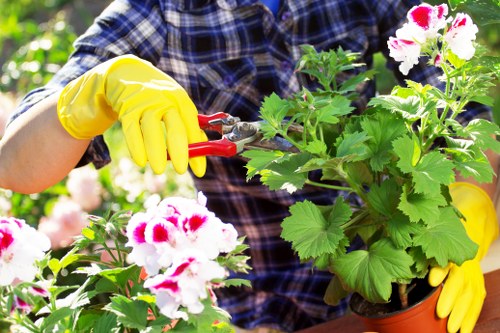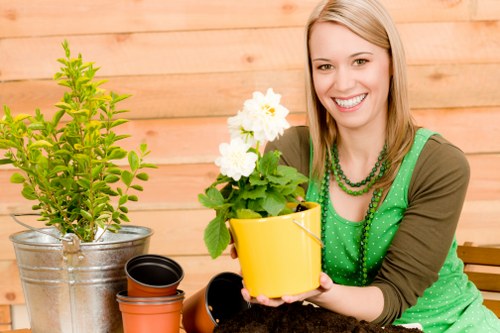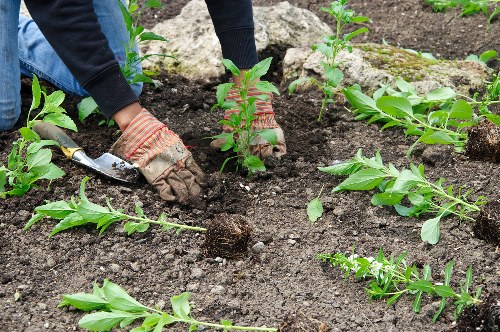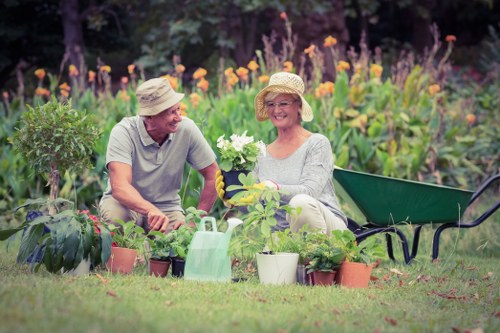Landscape Gardening in Poplar

Welcome to the vibrant world of landscape gardening in Poplar! Whether you're a seasoned gardener or just starting, transforming your outdoor space can bring immense satisfaction and enhance the beauty of your property.
Poplar offers a unique climate and soil conditions that are ideal for a variety of plants, flowers, and trees. Understanding these local specifics is crucial for successful gardening.
In this article, we'll explore the best practices, plant selections, and design ideas to help you create a stunning landscape garden that thrives in Poplar's environment.
Understanding Poplar's Climate and Soil

Poplar's climate is characterized by mild winters and warm summers, providing a conducive environment for a diverse range of plants.
The soil in Poplar tends to be rich in nutrients, but it's essential to conduct a soil test to determine its pH and nutrient levels.
Adjusting soil conditions based on test results can significantly improve plant health and growth.
Choosing the Right Plants for Your Garden

Selecting the appropriate plants is a cornerstone of successful landscape gardening. In Poplar, consider both native and non-native species that flourish in the local climate.
**Perennials** such as lavender, hostas, and daylilies provide continuous blooms throughout the seasons.
Evergreens like boxwood and holly add year-round structure and color to your garden.
Flowering Plants

Flowering plants add vibrancy and attract pollinators. Options like roses, tulips, and daisies are excellent choices for colorful displays.
Consider planting bulbs in the fall for spring blooms, ensuring a lively garden year after year.
Flower beds should be strategically placed to maximize visibility and impact.
Trees and Shrubs

Integrating trees and shrubs can provide shade, privacy, and a sense of enclosure.
Choose a mix of deciduous and evergreen species to maintain visual interest across seasons.
Pruning and regular maintenance are essential to ensure the health and aesthetics of larger plants.
Designing Your Landscape Garden
A well-designed garden balances aesthetics with functionality. Start by mapping out your space and deciding on key elements.
Incorporate pathways, seating areas, and water features to create inviting spaces for relaxation and enjoyment.
Use color theory and plant height variations to add depth and dimension to your garden layout.
Creating Focal Points
Focal points like statues, fountains, or a particularly striking plant can draw the eye and anchor your garden design.
Position these elements strategically to guide visitors through different areas of your garden.
Lighting can enhance focal points, especially during evening hours.
Incorporating Sustainable Practices
Embrace sustainable gardening practices to create an eco-friendly landscape.
- Use native plants to support local wildlife.
- Implement rainwater harvesting systems.
- Employ organic fertilizers and pest control methods.
These practices not only benefit the environment but also reduce maintenance efforts.
Maintaining Your Landscape Garden
Regular maintenance ensures your garden remains healthy and beautiful.
Establish a routine for watering, weeding, pruning, and fertilizing to keep plants thriving.
Seasonal tasks, such as mulching in the spring and leaf removal in the fall, help prepare your garden for changing weather conditions.
Watering Techniques
Proper watering techniques are vital for plant health. Drip irrigation systems can provide efficient and consistent moisture.
Avoid overwatering by monitoring soil moisture levels and adjusting as necessary.
Morning is the best time to water, reducing the risk of fungal diseases.
Pest and Disease Management
Keep an eye out for common pests and diseases that can affect your landscape garden.
- Identify the pests early to prevent extensive damage.
- Use natural predators or organic treatments to manage infestations.
- Maintain plant health through proper care to resist diseases.
Healthy plants are more resilient and less susceptible to problems.
Enhancing Your Garden with Accessories
Accessories can elevate the aesthetic appeal and functionality of your landscape garden.
Consider adding decorative elements like garden sculptures, benches, and lighting to create a personalized space.
Mulching not only enhances appearance but also conserves soil moisture and suppresses weeds.
Outdoor Lighting
Outdoor lighting extends the usability of your garden into the evening.
Use a combination of ambient, task, and accent lighting to highlight different areas and features.
Solar-powered lights are an energy-efficient option that can reduce electricity costs.
Seating and Relaxation Areas
Create inviting spaces with comfortable seating arrangements.
Options like garden benches, hammocks, or outdoor furniture can provide relaxation spots.
Position these areas to take advantage of views and natural beauty.
Seasonal Considerations
Different seasons bring unique challenges and opportunities for your landscape garden.
Plan for seasonal changes by selecting appropriate plants and adjusting maintenance routines.
Embrace the beauty of each season, from spring blooms to winter foliage.
Spring Gardening
Spring is a time of renewal and growth. Focus on planting new perennials and annuals.
Prune trees and shrubs to encourage healthy growth.
Apply mulch to protect soil and retain moisture as temperatures rise.
Summer Care
Maintain adequate watering during the hot summer months to prevent plant stress.
Control weeds and pests proactively to keep your garden healthy.
Provide shade for delicate plants and adjust lighting as needed.
Autumn Preparation
Prepare your garden for colder months by clearing fallen leaves and debris.
Plant bulbs for spring blooms and protect vulnerable plants from frost.
Review and plan for next year's garden to incorporate lessons learned.
Winter Maintenance
Protect plants from harsh winter conditions by mulching and covering sensitive species.
Prune dead branches and clean up garden tools to prevent damage.
Plan your garden layout and make necessary adjustments for the upcoming seasons.
Hiring Professional Landscape Gardeners in Poplar
If you're overwhelmed by the idea of gardening, consider hiring professional landscape gardeners.
Experts can offer personalized advice, handle complex tasks, and ensure your garden thrives.
Contact us today to schedule a consultation and take the first step towards your dream garden.